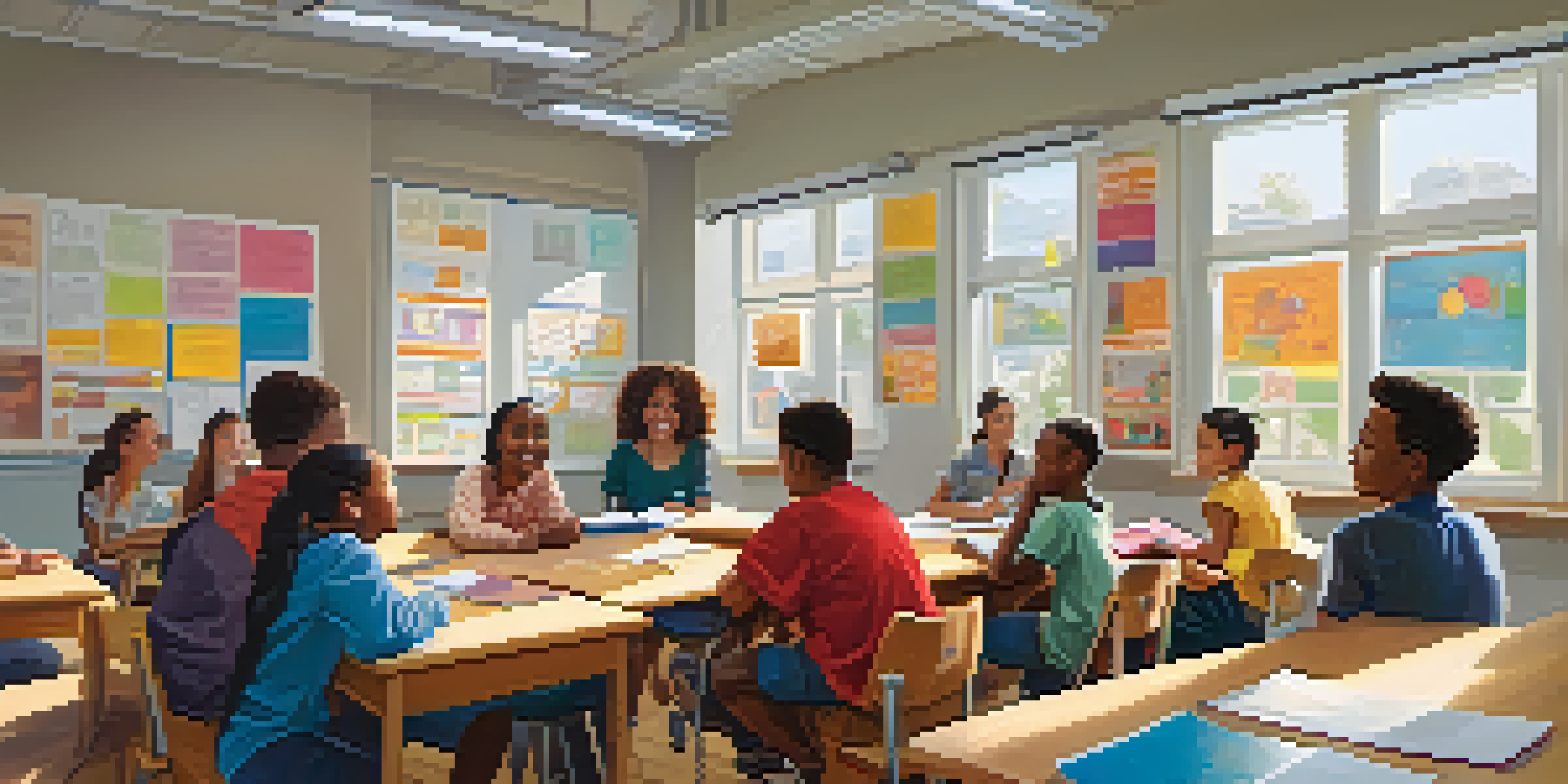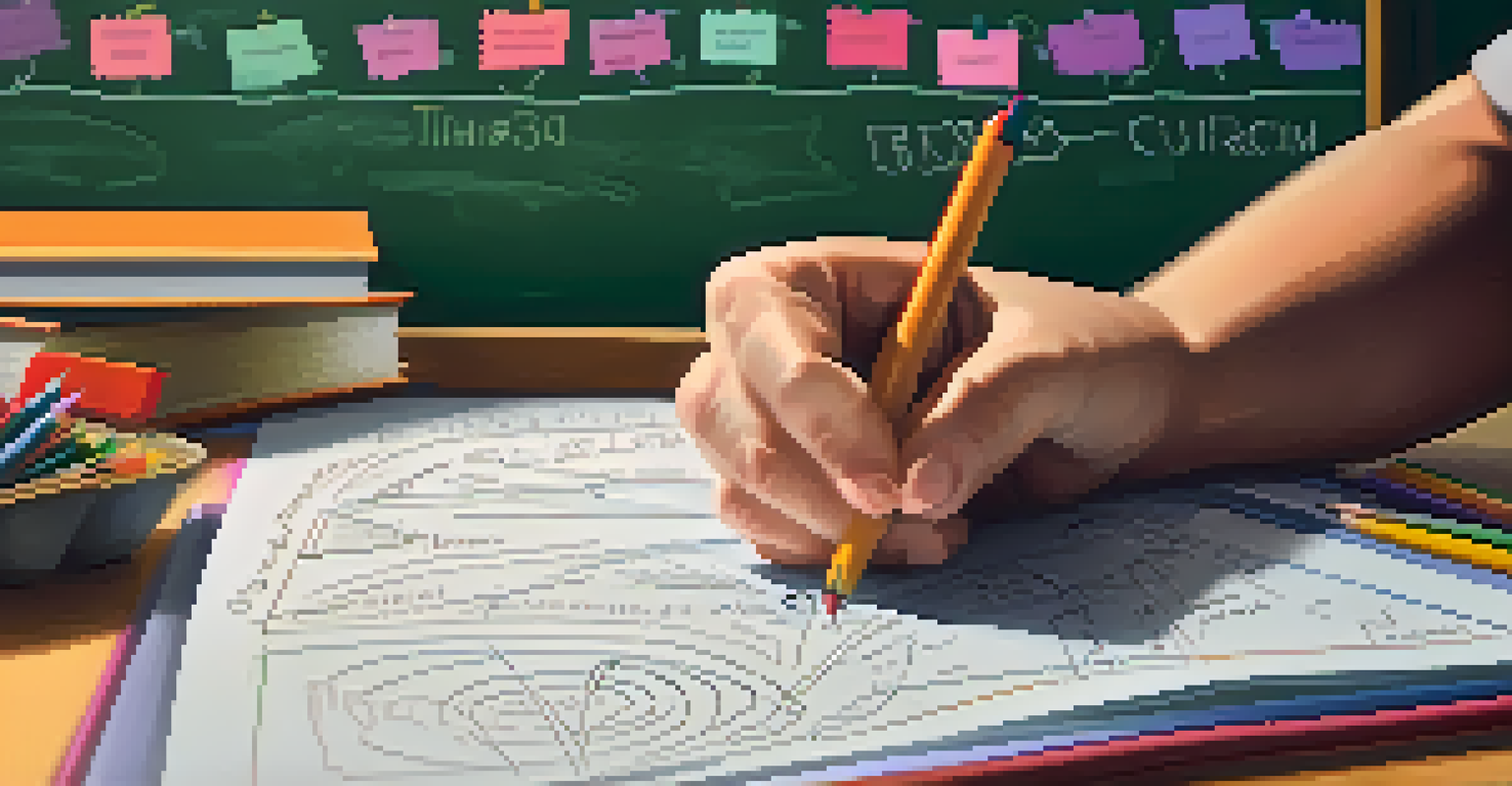The Importance of Critical Thinking in Education Today

Defining Critical Thinking in Education
Critical thinking is the ability to analyze, evaluate, and synthesize information. In education, it empowers students to question assumptions and think independently. This skill is not just about accumulating knowledge; it's about understanding how to use that knowledge effectively.
The aim of education is the knowledge, not of facts, but of values.
Imagine a student faced with a complex problem, like figuring out how to reduce waste in their school. Instead of just memorizing facts, critical thinking helps them explore various solutions, weigh pros and cons, and come up with a well-informed plan. This approach fosters a deeper understanding of the issue at hand.
By emphasizing critical thinking in education, we prepare students for real-world challenges, encouraging them to become active participants in their learning rather than passive recipients of information.
The Role of Critical Thinking in Problem Solving
Critical thinking is pivotal in developing effective problem-solving skills. When students learn to assess situations critically, they can identify the root cause of issues rather than just addressing symptoms. This skill is invaluable in both academic and everyday contexts.

For instance, consider a group project where team members must collaborate to achieve a common goal. By applying critical thinking, they can navigate differing opinions, analyze data, and reach a consensus that enhances their project’s quality. This not only improves the outcome but also builds teamwork skills.
Critical Thinking Drives Problem Solving
Critical thinking enables students to identify root causes and develop effective solutions, enhancing their problem-solving skills.
Ultimately, honing critical thinking leads to better problem-solving strategies, equipping students with the tools they need to tackle challenges in their studies and future careers.
Encouraging Creativity Through Critical Thinking
One of the lesser-known benefits of critical thinking is its ability to foster creativity. When students learn to think critically, they are encouraged to explore ideas beyond conventional boundaries. This exploration can lead to innovative solutions and unique perspectives.
Critical thinking is the key to creative problem solving in business.
Take, for example, a science class where students are asked to design an experiment. By using critical thinking, they can brainstorm various approaches and select the most effective one, blending creativity with analytical skills. This synergy can lead to groundbreaking discoveries.
By integrating critical thinking with creativity, educators can inspire students to not only think outside the box but also to shape their own learning experiences.
Building Strong Communication Skills
Critical thinking enhances communication skills, which are essential in every aspect of life. When students learn to articulate their thoughts clearly and logically, they become more persuasive and effective communicators. This is crucial in both academic settings and professional environments.
For example, during class debates or presentations, students who apply critical thinking can present their arguments in a structured manner, anticipating counterarguments and responding thoughtfully. This practice boosts their confidence and prepares them for future discussions.
Fostering Creativity in Learning
Integrating critical thinking with creativity encourages students to explore innovative ideas and approaches beyond conventional boundaries.
In essence, fostering critical thinking in education not only improves students' ability to convey their ideas but also empowers them to engage in meaningful conversations.
Preparing Students for a Complex World
In today's fast-paced, information-saturated world, critical thinking is more important than ever. Students are bombarded with data and opinions daily, making it essential for them to discern credible information from misinformation. This skill is vital for informed decision-making.
Consider the rise of social media, where information spreads rapidly, sometimes without verification. Students equipped with critical thinking skills can evaluate sources, cross-check facts, and form well-rounded opinions. This capability helps them navigate the complexities of modern life.
By prioritizing critical thinking in education, we are essentially preparing students to thrive in an increasingly complicated world, ensuring they become responsible and informed citizens.
The Impact of Technology on Critical Thinking
Technology plays a dual role in fostering and challenging critical thinking. On one hand, digital tools provide access to vast amounts of information, encouraging students to engage with diverse viewpoints. On the other hand, the overwhelming nature of this information can lead to superficial understanding.
For instance, educational platforms and online resources can enhance critical thinking by offering interactive learning experiences. Students can participate in virtual simulations or debates that require thoughtful analysis and collaboration. However, it's crucial to teach them how to filter information effectively.
Preparing Students for Modern Challenges
In an information-saturated world, critical thinking equips students to discern credible information and make informed decisions.
In this digital age, integrating technology with critical thinking instruction ensures students are not only tech-savvy but also capable of making sense of the information they encounter.
Cultivating a Critical Thinking Culture in Schools
Creating a culture that values critical thinking in schools begins with educators. Teachers play a pivotal role in modeling and promoting these skills within their classrooms. By encouraging questioning, discussion, and exploration, they foster an environment where critical thinking can flourish.
Schools can implement strategies such as project-based learning or Socratic seminars, which encourage students to engage deeply with content. These methods challenge students to think critically, collaborate, and communicate effectively. When students see their teachers prioritizing these skills, they are more likely to embrace them.

Ultimately, cultivating a critical thinking culture in education leads to a more engaged and thoughtful student body, ready to tackle the challenges of tomorrow.
Conclusion: The Future of Education and Critical Thinking
As we look to the future of education, the importance of critical thinking cannot be overstated. It serves as the foundation for lifelong learning, enabling individuals to adapt and thrive in an ever-changing world. Educators must prioritize these skills to prepare students for the complexities ahead.
By embedding critical thinking into curricula and classroom practices, we equip students not only with knowledge but with the ability to apply that knowledge in meaningful ways. This prepares them for success in their careers and personal lives.
In conclusion, fostering critical thinking in education is not just a trend; it is a necessity for developing thoughtful, capable individuals who can navigate the challenges of the future.